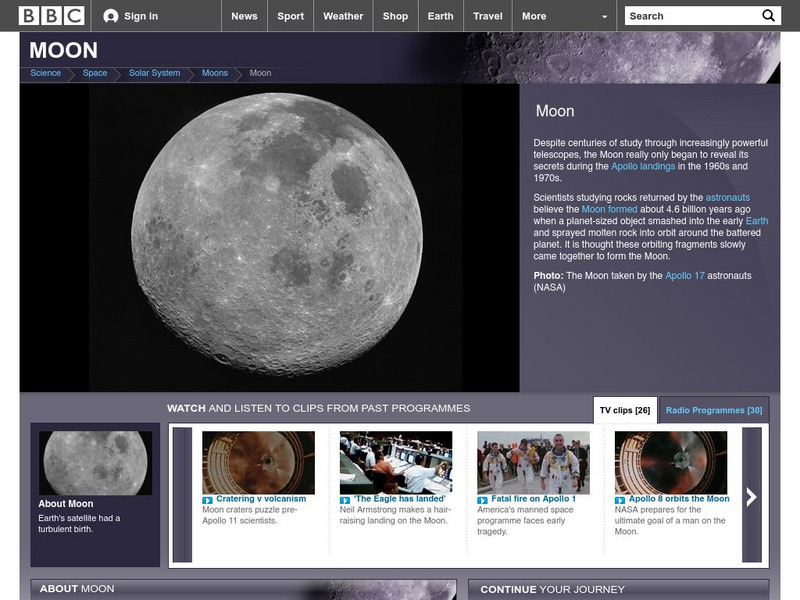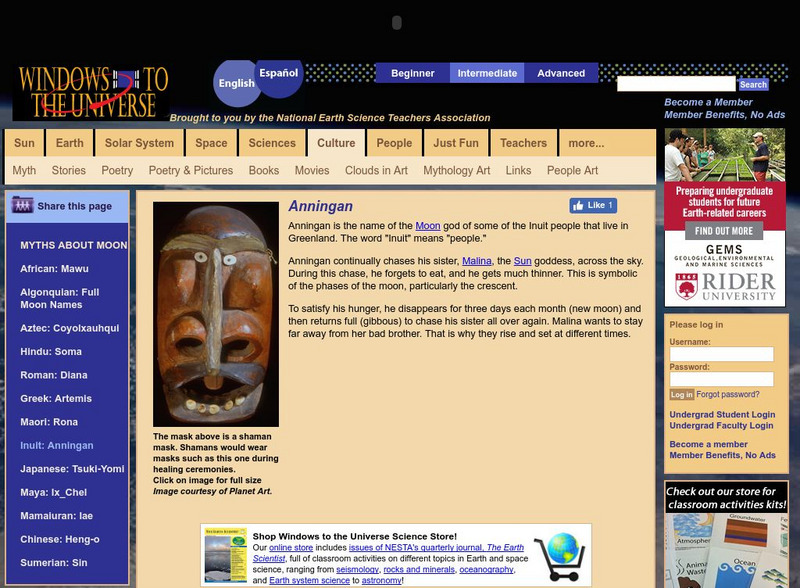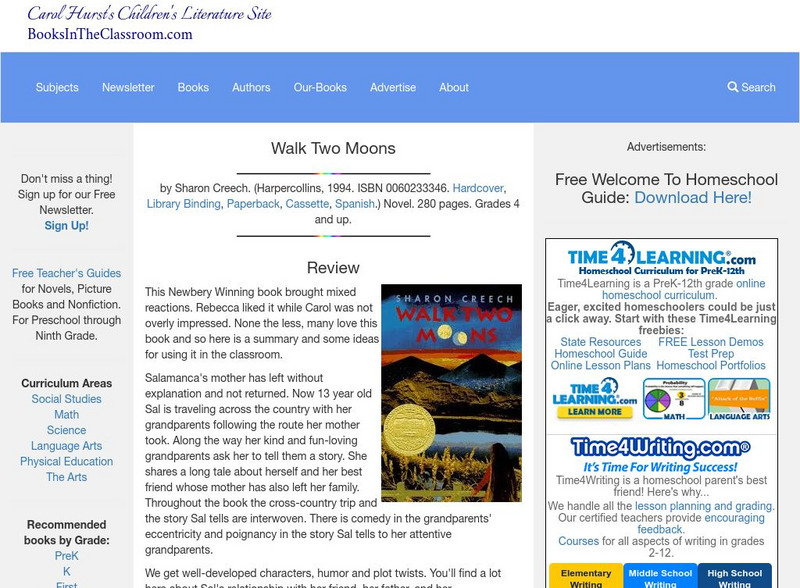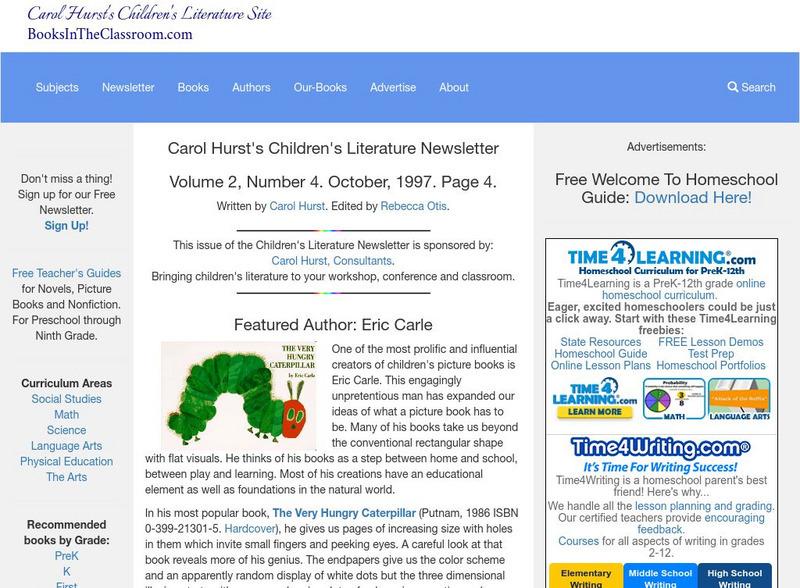BBC
Bbc Science and Nature: The Moon
The BBC brings together a lot of useful information about the moon and related topics, such as the lunar landings, and publishes it in the form of a traveler's guide.
Other
Why Does the Moon Go Through a Cycle of Phases?
In this thorough lesson plan site, the various phases of the moon are examined. Objectives are listed, procedures are clearly outlined, and there are links to worthwhile supplementary sites.
University of Texas at Austin
The University of Texas Mc Donald Observatory: Observing the Moon
Students make drawings of the moon at different times to see if the moon always looks the same and if its surface looks different at different times.
Cornell University
Cornell University: Astronomy: The Phases of the Moon
This site from Cornell University provides great information on the different phases of the moon. As the Moon moves in its orbit around the Sun, our view of the side illuminated by the Sun changes. Furthermore, the rising and setting...
World Wide School
World Wide School: Etext of "The Valley of the Moon"
This site provides the complete etext for Jack London's story, "The Valley of the Moon."
World Wide School
World Wide School: Etext of "The First Men in the Moon"
This site provides the complete etext for H. G. Wells's story, "The First Men in the Moon."
Globio
Glossopedia: Moon
Orbiting around Earth at an average distance of 384,392km is our constant companion, the Moon. This and a great deal more can be learned about our closest neighbor in this article by GLOBIO
Utah Education Network
Uen: Trb 3:1 Investigation 1 Comparing the Earth & Moon
Third graders compare the earth and the moon in this activity.
PBS
Pbs American Experience: The Women Who Brought Us the Moon
Thousands of women began their careers at NASA as computers, before the advent of electronic machines. A diverse and potent force in space exploration, their calculations were ultimately responsible for sending astronauts to the moon.
NASA
Nasa: A Meteoroid Hits the Moon
On May 2, 2006, a meteoroid hit the moon with a force equivalent to four tons of TNT. The event was captured on a 10-inch telescope equipped with a video camera. The video was then played in slow motion in order to be visible by the...
Ducksters
Ducksters: Kids Science: Phases of the Moon
Kids learn about the science of the phases of the moon. Full, Gibbous, Quarter, and Crescent.
NASA
Nasa Star Child: The Moon Earth's Satellite
A summary of our knowledge about the moon, including astronauts who have visited and a short description of what the moon is like.
Other
The Happy Scientist: Why Is a Full Moon So Bright?
Activity helps students find out why a full moon is so bright.
The Wonder of Science
The Wonder of Science: Ms Ess1 1: Earth Sun Moon System
Develop and use a model of the earth-sun-moon system to describe the cyclic patterns of lunar phases, eclipses of the sun and moon, and seasons.
CK-12 Foundation
Ck 12: Fifth Grade Science: Earth Science: The Sun Earth Moon System
[Free Registration/Login may be required to access all resource tools.] Discusses solar and lunar eclipses, the phases of the Moon, and why the phases occur.
National Earth Science Teachers Association
Windows to the Universe: Anningan
Windows to the Universe allows one to learn more about the Inuit mythology. "Anningan is the name of the Moon god of some of the Inuit people that live in Greenland. The word 'Inuit' means 'people.'"
National Earth Science Teachers Association
Windows to the Universe: Tsuki Yomi
Use this essay from the Windows to the Universe to learn more about Japanese mythology. "Tsuki-Yomi was the Moon god according the oldest Japanese religion, Shinto, which means 'the way of the gods.'"
Books in the Classroom
Carol Hurst's Children's Literature Site: Walk Two Moons
Discussion question, a lesson plan, and links to related resources for teaching students reading "Walk Two Moons" by Sharon Creech.
Utah Education Network
Uen: How Big Are Earth, Sun, and Moon?
Understand where the sun is in the solar system and how big the earth, moon, and sun are.
Smithsonian Institution
Smithsonian Learning Lab: The Universe, an Introduction
Start with the questions all students ask: How big is the universe, how far away are the planets and stars, how did they form and when, how do they move and why? Build on their natural curiosity. The Smithsonian, in cooperation with...
Books in the Classroom
Carol Hurst's Children's Literature Site: Eric Carle
What do you know about Eric Carle, the author? This Carol Hurst site highlights some interesting facts about this author's life and refers to some of his books.
Blackdog Media
Classic Reader: Moon and Sixpence by William Somerset Maugham
This is the complete text of the novel "Moon and Sixpence" by William Somerset Maugham.
Other popular searches
- Phases of the Moon
- Sing Down the Moon
- Tides and the Moon
- Life on the Moon
- Man on the Moon
- Under the Same Moon
- Midnight on the Moon
- Shadows on the Moon
- Phase of the Moon
- The Moon Landing
- Craters on the Moon
- Stages of the Moon














